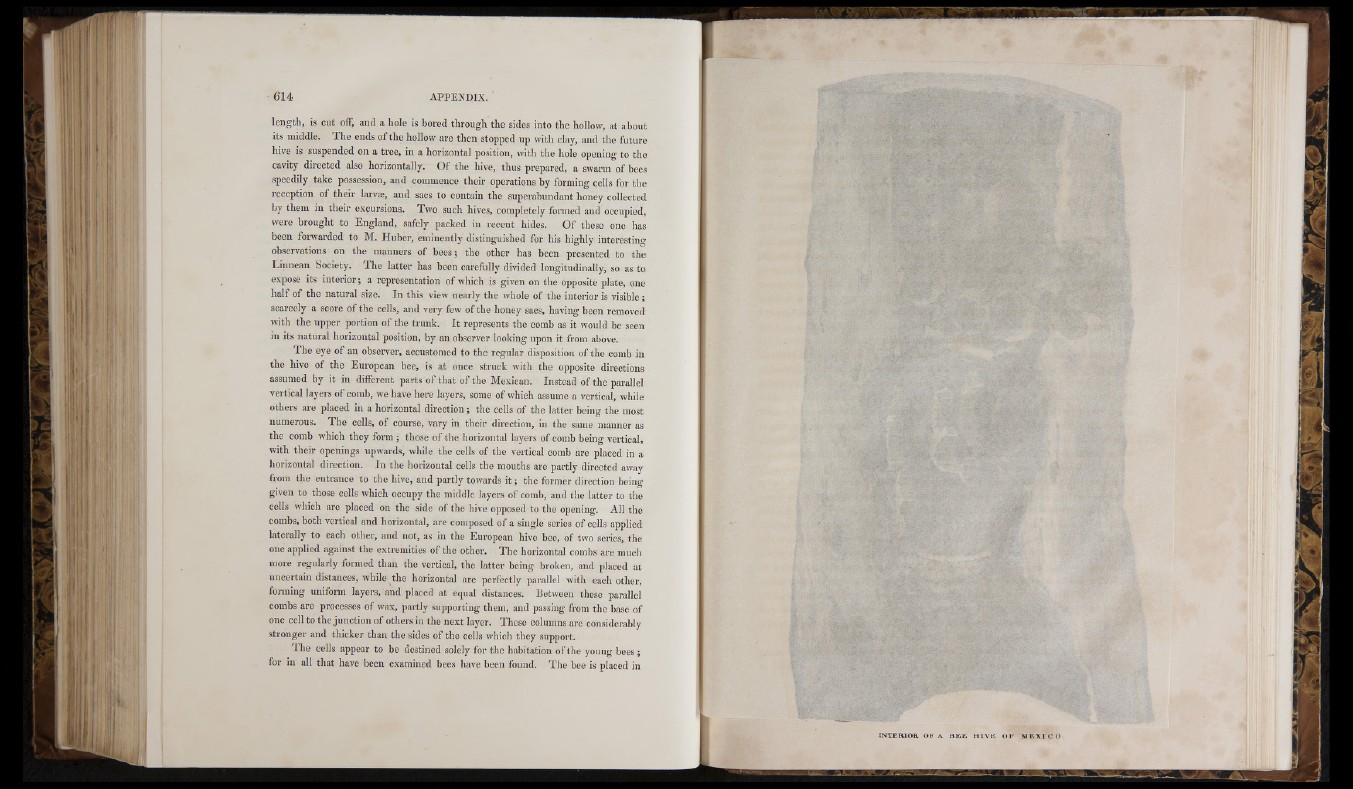
length, is cut off, and a hole is bored through the sides into the hollow, at about
its middle. The ends of the hollow are then stopped up with clay, and the future
hive is suspended on a tree, in a horizontal position, with the hole opening to the
cavity directed also horizontally. Of the hive, thus prepared, a swarm of bees
speedily take possession, and commence their operations by forming cells for the
reception of their larvie, and sacs to contain the superabundant honey collected
by them in their excursions. Two such hives, completely formed and occupied,
were brought to England, safely packed in recent hides. Of these one has
been forwarded to M. Huber, eminently distinguished for his highly interesting
observations on the manners of bees; the other has been presented to the
Linnean Society. The latter has been carefully divided longitudinally, so as to
expose its interior; a representation of which is given on the opposite plate, one
half of the natural size. In this view nearly the whole of the interior is visible;
scarcely a score of the cells, and very few ofthe honey sacs, having been removed
with the upper portion of the trunk. It represents the comb as it would be seen
in its natural horizontal position, by an observer looking upon it from above.
The eye of an observer, accustomed to the regular disposition of the comb in
the hive of the European bee, is at once struck with the opposite directions
assumed by it in different parts of that of the Mexican. Instead of the parallel
vertical layers of comb, we have here layers, some of which assume a vertical, while
others are placed in a horizontal direction ; the cells of the latter being the most
numerous. The cells, of course, vary in their direction, iu the same manner as
the comb which they form ; those of the horizontal layers of comb being vertical,
%vith their openings upwards, while the cells of the vertical comb are placed in a
horizontal direction. In the horizontal cells the mouths are partly directed away
from the entrance to the hive, and partly towards it ; the former direction being
given to those cells which occupy the middle layers of comb, and the latter to the
cells which are placed on the side of the hive opposed to the opening. All the
combs, both vertical and horizontal, are composed of a single series of cells applied
laterally to each other, and not, as in the European hive bee, of two series, the
one applied against the extremities of the other. The horizontal combs are much
more regularly formed than the vertical, the latter being broken, and placed at
uncertain distances, while the horizontal are perfectly parallel with each other,
forming uniibrm layers, and placed at equal distances. Between these parallel
combs are processes of wax, ¡lartly supporting them, and passing from the base of
one cell to the junction of others in the next layer. These columns are considerably
stronger and thicker than the sides of the cells which they support.
The cells appear to be destined solely for the habitation ofthe young bees;
for in all that have been examined bees have been found. The bee is placed in
IN T E R JO R OP / O F M E X X C O